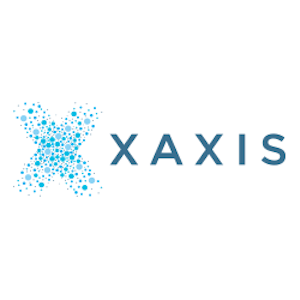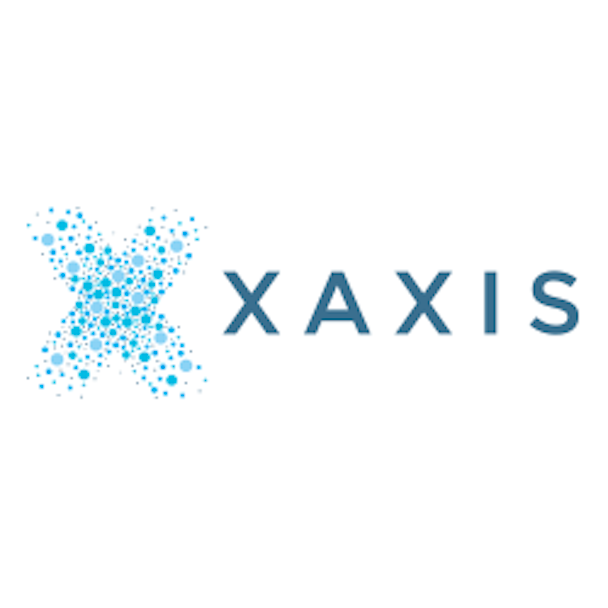The dawn of programmable marketing: a look inside Xaxis’ Co-Pilot initiative
The Drum shines a light on how the GroupM media investment unit is leveraging its relationship with AppNexus to harness machine learning, and better improve the performance of its media traders, and usher in the age of ‘programmable marketing’.


Xaxis Co-Pilot scheme is an example of how WPP is leveraging its relationship with AppNexus
Machine learning, Artificial Intelligence (AI) – for many of those involved in the advertising industry such terms are nothing more than buzz phrases used by panelists on the conference circuit, with little real application to contemporary media practice.
However, while the more cynical in the industry may dismiss the above phrases as merely the domain of science fiction, the impact of such technologies (be it positive, or negative) will be felt a lot sooner than such cynics think.
The latest issue of The Drum magazine, guest edited by IBM’s AI system Watson demonstrated that, while not without its problems, the technology is within the grasp of the contemporary marketer.
Meanwhile, at the cutting edge of the media industry’s use of AI, is the ad tech sector (or ‘programmatic advertisers’). A recent presentation from the AppNexus Optimize summit hosted in London demonstrated how GroupM’s Xaxis is leveraging its relationship with AppNexus (an ad tech outfit which is 15 per cent owned by its parent WPP) to stay ahead of the curve.
Xaxis Co-Pilot

At present, not much has been spoken publicly about Xaxis Co-Pilot. A New York-based job ad for the GroupM outfit, recently posted listed on LinkedIn, reads: “Co-Pilot is a Xaxis initiative to increase operational efficiency and campaign performance through automation, advanced modelling to value impressions.”
In addition, Xaxis also claims that Co-Pilot lets its media traders more easily manage numerous campaigns simultaneously, while offering a suite of reporting tools that can help them uncover insights, plus identify trends that provide the outfit with unique opportunities.
Speaking recently at the AppNexus-hosted Optimize event in London, Karl Bunch, Xaxis, VP of global product development, took to the stage to offer further insight into the Co-Pilot service, including how it was able to increase budgets several times over since its first introduction.
“The industry is on the verge of a revolution, by 2020 if you don’t have artificial intelligence or machine learning in your environment or platform, and under your control, with systems you are building to buy media, then you will not even be at the table stakes,” he declared.
How Xaxis is using AppNexus’ ‘programmable bidder’ to improve performance
With Co-Pilot, Xaxis is using AppNexus Programmable Bidder (APB) to help its data scientists build algorithms that buy media more efficiently for its advertisers. As a result, Xaxis is able to “pay the bills”, according to Bunch, who said it was using the technology to establish the best means of trading, and then scaling this rapidly across the organisation.
“Our approach to APB is born of entrepreneurialism … we’re developing our systems so that they’re internally open sourced so that anybody can contribute to them … and scale them out to the other markets,” he explained.
“Machine intelligence is going to be the future of media trading. Financial trading is cool – you can do interesting things with it - but media trading is a person-on-person thing, so we believe in the ‘co-pilot idea’,” he added.
Xaxis Co-Pilot involves inputting data data made available to Xaxis into APB which then produces algorithms that better enable its traders to buy more effectively, and then scale such modes of working.
Since launching Co-Pilot, Xaxis has used this means of working to build a ‘recency and retargetting strategy’, that helps its traders intelligently bid on ad impressions which better match users to more relevant advertising.
“On some occasions, the tool is being used to achieve 75-times normal conversion rates,” said Bunch, adding that it was also using it to improve levels of ad viewability.
Freeing employees from menial tasks
He went on to say that performance impressed clients so much that budgets rose up to eight times what they had been previously in some instances. An additional benefit was that Xaxis employees’ previously menial tasks, such as frequency-capping, were made much easier under Co-Pilot.
Quoting the above-mentioned job ad, which referenced Xaxis Co-Pilot, the scheme aims to change how campaign traders work by:
- Freeing them from repetitive, basic optimisation tasks
- Allowing for a strategic approach to setting campaigns up for success
- Having them focus on expanding the universe that Co-Pilot can optimise against
“We’re freeing people’s minds to use the best part of them, and that’s what we’re doing with APB,” explained Bunch.
Choosing ‘the right inventory’ amidst the intricacies of real-time trading

This means of working helps address the problems of choosing the “right inventory to buy”, said AppNexus’ chief data scientist Catherine Williams, while also speaking at the same event as Bunch.
“A trader setting up a campaign of a line item might choose their targeting, but the optimisation needs to do a good job of figuring out whether any individual impression is worth bidding on.
“You need to allocate spend to the actual pockets that are going to work, using a ‘yes’, ‘no’ binary decision," she said, adding that APB helps traders determine the actual value of a given impression.
Such tools can help in the complex world of real-time media buying, where media traders are expected to work with a number of trading models (such as second price auctions) at scale, adding great complexity to their roles.
Second price auction theory dictates that traders will get the optimum outcome as long as they bid what they actually think the value of the impression is worth to their business.
“So probability-wise you want to try and find the probability of the outcome, and then multiply it by the value of the outcome. Valuation then comes down to a classic prediction problem, of predicting clicks, and conversions, plus whatever other outcomes you can get,” added Williams.
Theory doesn’t always apply in the reality of a trade
However, she went on to acknowledge that reality is not always theoretical, especially in the instance of real-time media trading. “For instance, if you have budget constraints, or there are other auction mechanics factors, that muddy the waters, plus other over-arching business goal, that makes it not the case that you want to bid your second-price value,” she explained.
“So the bidding component here is all about using the final bid price, taking the allocation, and valuation as inputs. In practice this often means you’re going to shave your final bid price down (depending on what kinds of factors), but sometimes (depending on your business goals) you might want to raise your bid.”
AppNexus Programmable Bidder
She went on to explain how the AppNexus optimisation platform has a component – internally called ‘V7’ – that computes the expected value of impressions based on historical data (using several variables such as the domain, geography, frequency, and recency, etc.).
Traditionally, the remaining methods of optimisation (allocation and bidding) have then been up to traders to perform manually, but APB aims to alleviate this complexity.
“One year ago we launched AppNexus Programmable Bidder, which uses a brand new way of producing valuations using bonsai trees [see chart below],” said Williams, adding that this then lets advertisers create decision trees using over 40 different variables. To determine bid prices in real time.

Ushering the era of ‘programmable marketing’
AppNexus claims its offering to market differs from the alternatives posed by the industry’s ‘walled gardens’ (i.e. Facebook and Google) in that it gives marketers room to be more bespoke on how they bid on media.
This concept of encouraging advertisers to ‘bring your own algorithm’ (where they plug their own proprietary data into APB in order to better determine the optimum bid pricing) was the ad tech outfit’s first offering as part of its ‘programmable marketing’ messaging (see video).
The terminology is one AppNexus has been using in favour of ‘programmatic advertising’ since the early part of the year, with the ad tech claiming that over 20 of its clients have used APB at present to enhance their online media spend, with over $2m of spend passing through the platform, as of May this year.

